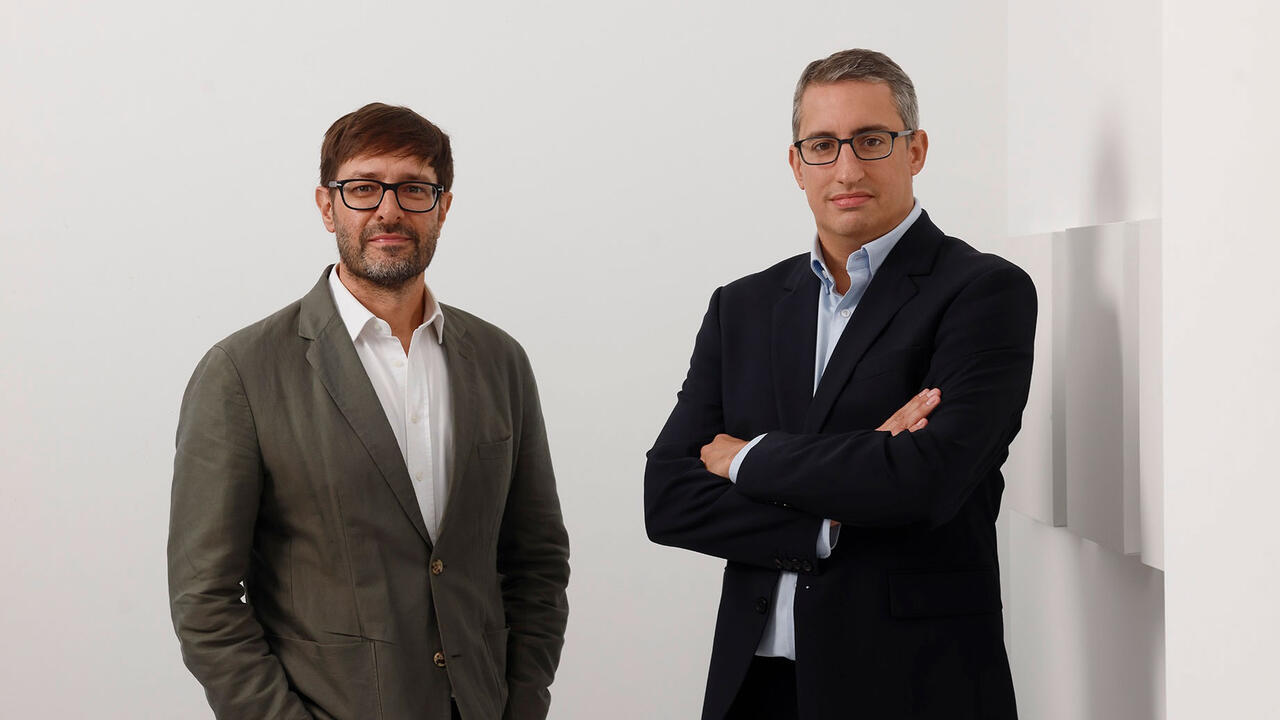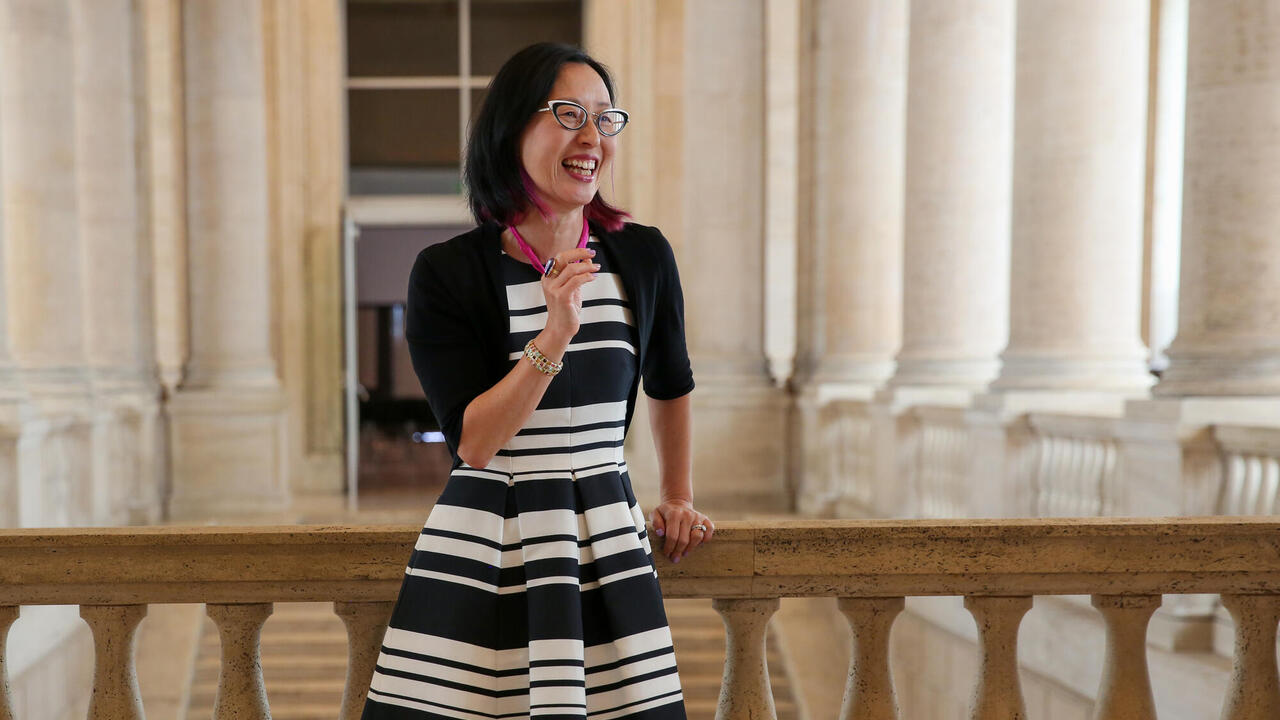Alteronce Gumby on His Cosmic Abstractions
The artist talks about his practice of using glass and gemstones in his work, his inspiration behind his colours, and the cosmic and spiritual presence embedded in his paintings
The artist talks about his practice of using glass and gemstones in his work, his inspiration behind his colours, and the cosmic and spiritual presence embedded in his paintings

Terence Trouillot: Last time we spoke at Charles Moffett, you were telling me how you imagine the colour spectrum would be different on other planets. I wonder if you could say a little more about that and, more generally, how you approach colour in your work.
Alteronce Gumby: Considering that there are literally 100 billion of stars in the galaxy, and each one has its own spectrum, we can theorize that, if I were to stand on another planet and hold up a prism to the light, I would see a completely different colour spectrum. Everything would change – from the vegetation, animals, minerals and soil to the ways that we have identified colour within society and radicalized it in terms of its relationship to identity. If I were to stand on that other planet, would I still be seen as a Black man? Would they even know what the colour black was if I were to identify myself as such? Imagining this allows me to think about the ways humans define colour and use its language to codify race and identity.
TT: This puts me in mind of Afrofuturism, which considers Blackness a form of technology for survival. Do you see your work as being inspired by Afrofuturism?
AG: In a way, Afrofuturism – including Sun Ra’s idea that Black people are from another planet – is about escape. Sun Ra is a huge inspiration for me. I really do look at my paintings as spaceships, as these vessels that can allow my consciousness and imagination to go to distant planets. I think about the images that I make as cosmic landscapes. I’m trying to imagine what it would be like to stand on another planet and to see colours not as fixed but as something that can shift.

I’m also looking more at astrophysics and thinking about the gemstones that are in each painting as actual fragments of materials forged from stars. They have this history of colour, energy and light that’s infused within their raw material, their raw colour. In a way, I see these gemstones in my paintings as carrying within them the energy of the universe. Quartz crystals give off a very strong frequency.
The world wouldn’t be what it is without these minerals embedded in the earth, nourishing the plants and animals that, in turn, nourish us. When thinking about colour, light and minerals, it’s important to remember that we’re all connected, from the micro to the macro.
TT: That’s a good segue into talking about your use of materials as a painter, working with glass in particular, but also these gemstones and activating them as part of your process. How did that all come about?
AG: I’m very conscious of the intentions I set within my work and the things I’m asking them. My sense of spiritualty comes from my upbringing. My mother was a minister and I grew up attending church in Harrisburg, Pennsylvania. I was always made aware of this being or energy in the world that was felt but not seen. I kept nourishing that, especially in my teenage years when I stopped going to church.
Thinking about the use of gemstones within holistic practices really interested me, especially in their relationship to colour. I activated them using moonlight to enable this strong energetic presence within my paintings. I wanted my paintings to feel alive. That was where I started.

The idea of using glass came to me one day when I went to the bodega near my studio to get a sandwich. I noticed that there was a pile of broken glass at a bus stop: it was glistening in the sunlight, rainbows flickering off it. I was like: that’s the most beautiful thing I’ve ever seen! It reminded me of Félix González-Torres’s Untitled (Portrait of Ross in L.A.) (1991). I took the glass back to my studio and sat with it. I didn’t really know what to do with it, but I started playing around with it, treating it like it was acrylic.
At around the same time, in late 2018, I saw Jack Whitten’s show, ‘Odyssey’, at The Met Breuer in New York. Looking at the way he used a mosaic aesthetic in his work, I thought I could try that out with the glass fragments. Jack has always been a huge inspiration and was a great mentor throughout my studies.
TT: In your latest work, currently on show at Charles Moffett in Tribeca and at False Flag in Queens, you’re embedding these gemstones within the substrate of the work, positioning them in your own zodiac constellations. Can you talk a little bit about how you see these abstractions as self-portraits?
AG: For me, putting these pieces of glass together was also a metaphor for putting myself together, especially in terms of my relationship to the cosmos and astrology. But then I’m also trying to redefine myself through colour, through abstraction, though the process of painting. Each piece of glass that I place symbolizes a moment of my life that has accumulated to form who I am as an individual sitting in front of you today.

TT: Your work is also about creating a shared experience for the viewer, to participate in this energy that your paintings give off. Are you at all concerned about who is actually experiencing the work or whether they will understand the holistic element?
AG: Sometimes, yes. I’d like to know everyone who acquires the work but, at times, it’s out of my control. Once these pieces leave the gallery or my studio, I can only guide the viewers mind’s eye to a certain perspective. I do my best to lay the path out for them. I put as much attention into the construction and conjuring of the painting I as possibly can, so that, when it leaves me, the intention and energy is still there, still set. I’m bringing these materials together, placing them in a certain way, making sure the alignment is right within them and that the palette they’re working with is also amplifying the colours these gemstones are presenting. But, in the end, I feel like there’s only so much I can do. I can only play the song: I can’t make you dance to it.
Alteronce Gumby's 'Somewhere Under the Rainbow / The Sky is Blue and What am I' is a dual-site exhibition on view at Charles Moffett, New York and False Flag, New York, through 25 April 2021.
Main image: Alteronce Gumby, 'Somewhere Under the Rainbow / The Sky is Blue and What am I', 2021, exhibition view, False Flag, New York. Courtesy: the artist and False Flag, New York






















